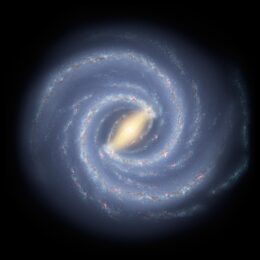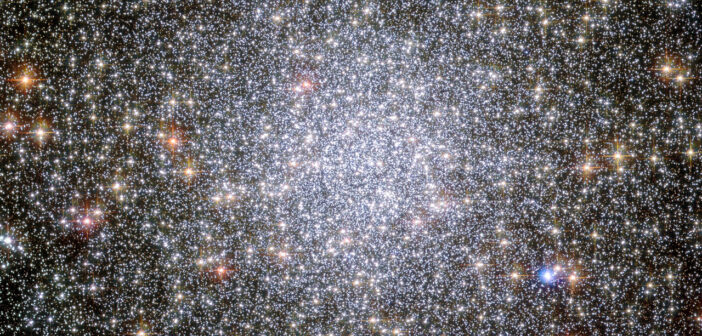Massive star clusters have moved about the Milky Way for billions of years, and a recent study finds that more complicated dynamics must be considered when using these clusters to investigate the evolutionary history of the galaxy.
Globular Cluster and Galaxy Evolution
Born from giant molecular gas clouds, globular clusters are large, dense collections of tens of thousands to millions of stars. These systems are very stable and long-lived, making them some of the oldest residents of the Milky Way and important relics of our galaxy’s ancient structure that has long since evolved.
Within the galaxy, globular clusters tend to fall into two groups — those that formed in the Milky Way (in situ) and those that were accreted during mergers. One clue often used to identify a globular cluster’s origin is its current location in the Milky Way: globular clusters formed in situ are typically found near the galactic center and accreted globular clusters tend to lie more so in the galactic halo. But could the Milky Way’s long-term evolution have also played a role in these globular clusters’ present positions?
Trapped in Resonance

An artist’s rendition of the Milky Way showing a strong central bar. Click to enlarge. [NASA/JPL-Caltech]
Using Gaia Data Release 3 measurements and dynamical simulations, Adam Dillamore and collaborators (University of Cambridge) explore how the Milky Way’s barred center influences its surroundings. The authors find that the globular clusters most significantly impacted are those caught in resonance. As the central bar slows, these clusters are transported farther away from the galactic center, making a cluster’s current location less indicative of its origins.
Understanding Observations
How do the authors’ findings fit in with previous observations? Of note is Messier 22, a globular cluster with a metallicity spread akin to those anticipated in the Milky Way’s first massive star clusters. After becoming entangled in resonance with the central bar, Messier 22 likely migrated from the very center of the Milky Way outward, further indicating an ancient origin.

Simulation snapshots of the globular cluster 47 Tucanae, where the simulated stars are shown in on-sky coordinates. From left to right, the panels show the impacts of no central bar, a steady central bar, and a slowing central bar on the resulting spatial distribution of stars in the cluster. The presence of a central bar creates a diffuse halo, corresponding to the prior observations of the central region of the cluster marked with the black circles. Click to enlarge. [Dillamore et al 2024]
The Milky Way does not rest in a steady state, but instead changes over time, impacting the dynamics of its constituents. When it comes to using globular clusters to characterize the galaxy’s past, taking resonances and other perturbations into account is imperative to accurately determine the Milky Way’s evolutionary history.
Citation
“Trojan Globular Clusters: Radial Migration via Trapping in Bar Resonances,” Adam M. Dillamore et al 2024 ApJL 971 L4. doi:10.3847/2041-8213/ad60c8
